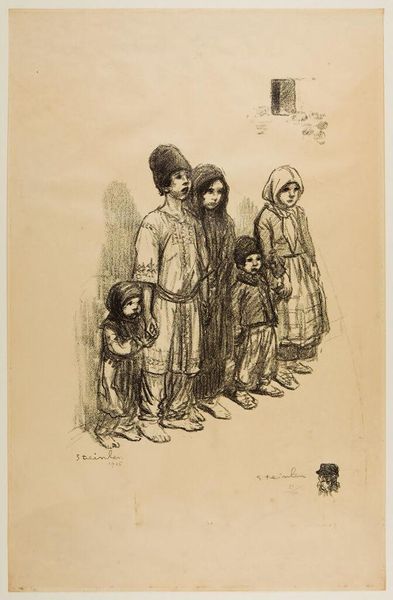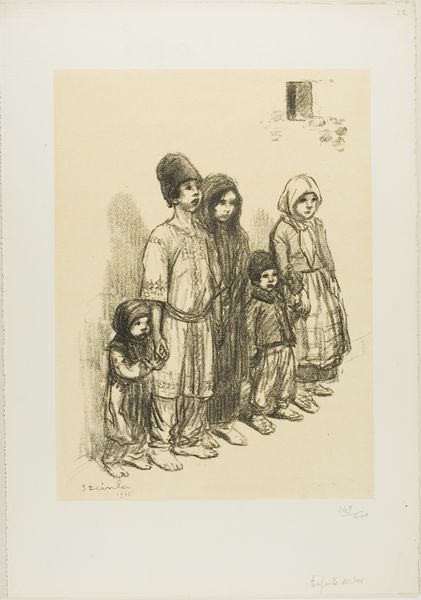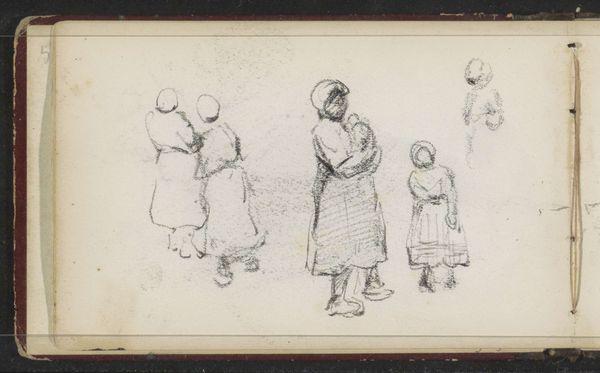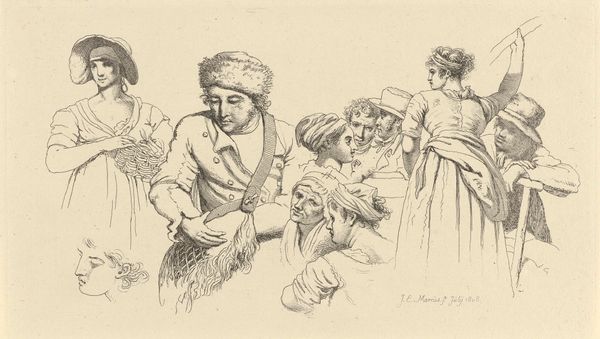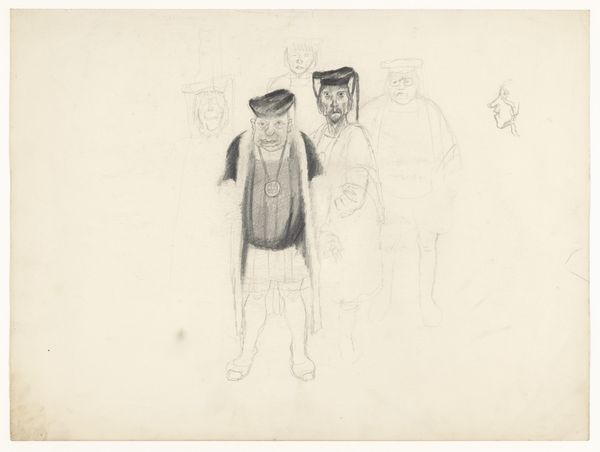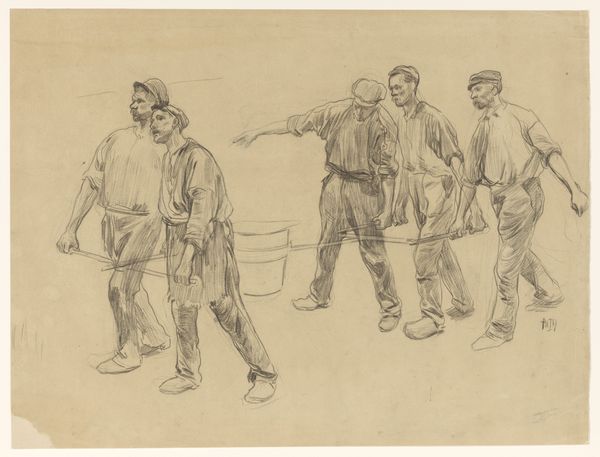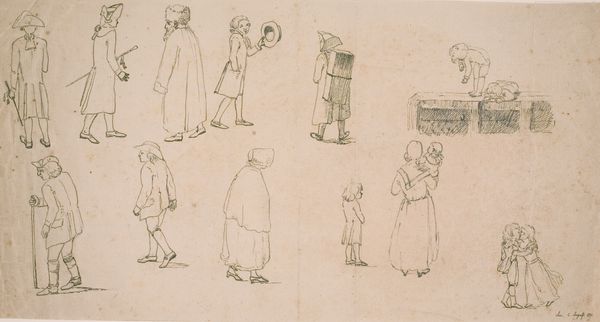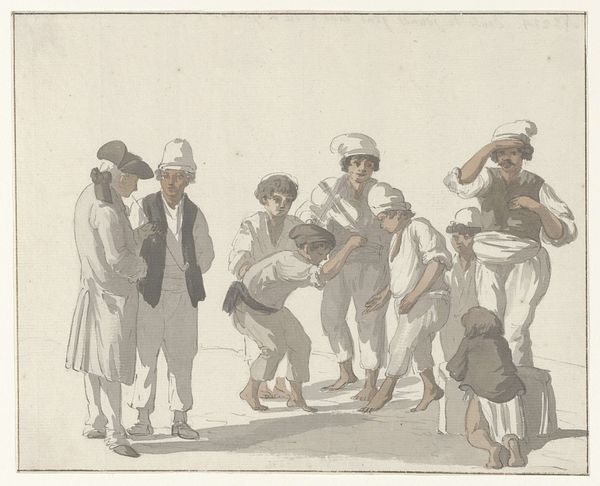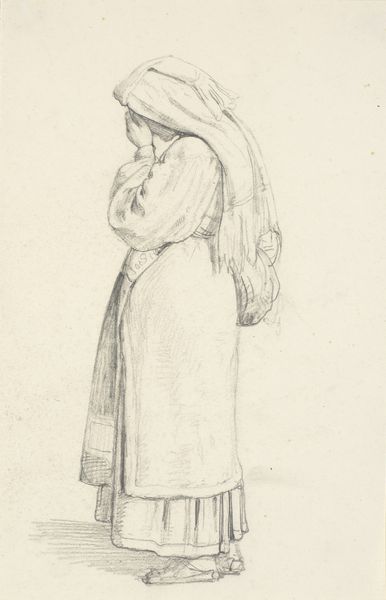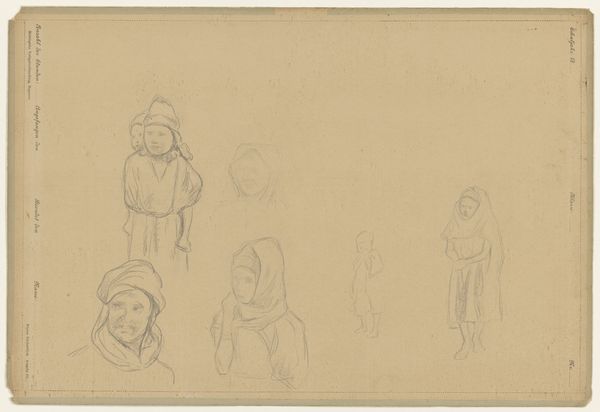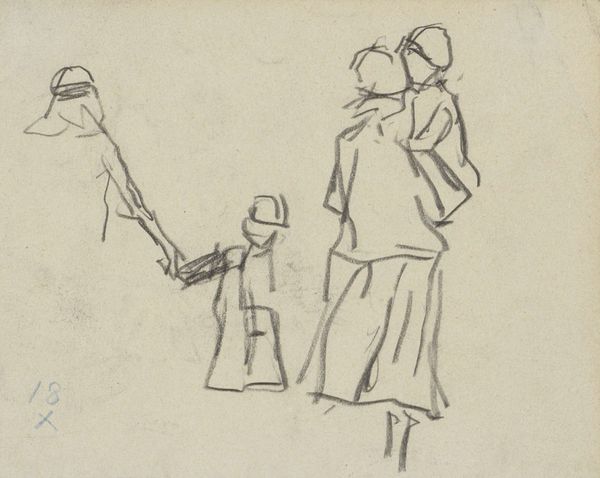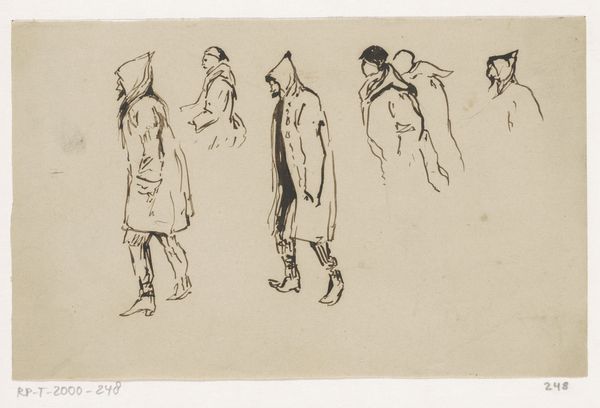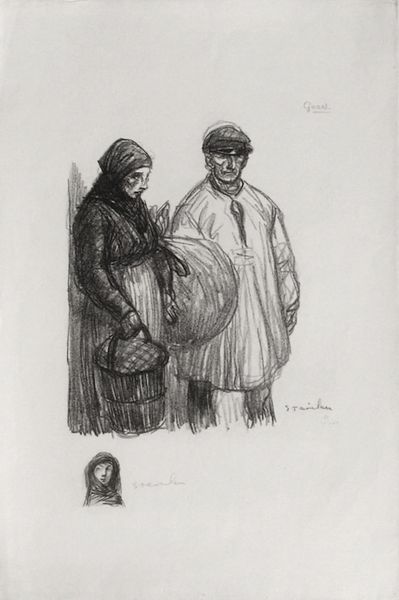
drawing, paper, pencil
#
portrait
#
drawing
#
paper
#
pencil
#
genre-painting
#
realism
Dimensions: height 278 mm, width 386 mm
Copyright: Rijks Museum: Open Domain
Curator: The drawing before us is entitled "Servische boerentypen," or "Serbian Peasant Types," rendered in pencil on paper by Théophile Alexandre Steinlen, sometime between 1879 and 1923. What are your initial impressions? Editor: The drawing's monochromatic palette creates a solemn mood. They are presented as a group, but also feel oddly isolated, each figure existing in their own private world. Curator: Indeed, the pencil work and their clothing create a visual tapestry that is also indicative of their cultural roles and traditions. Look at how the head coverings shape the faces, each a variation on themes of piety, humility, or possibly even subjugation. The garments carry cultural weight, preserving tradition. Editor: Absolutely. This brings to mind how clothing, especially in the Balkans during this period, functioned as a powerful marker of identity, signaling not just ethnicity but also class, region, and religious affiliation. Steinlen's piece invites reflection on these layers of social and cultural identity through the depiction of their dress. Curator: There's a visual language to explore. For example, the slight downcast of eyes that we find in several of the subjects, especially among the women in the composition. Do you think that communicates power dynamics in early 20th-century Serbian rural life? Editor: Certainly. Their averted gazes subtly suggest a society shaped by patriarchal norms, limiting agency. Also, consider the artistic gaze. Who were these images for, and how does that affect how the figures are presented to us? Was it trying to inform, stereotype, or generate awareness? Curator: I would argue a careful rendering and presentation like this avoids an entirely reductionist read, even if created from an outside perspective. Editor: Perhaps, but these "types" run the risk of flattening individual identities into a generalized collective. We must be cautious of the dangers of simplification, especially when outsiders are involved. Curator: What’s clear is Steinlen successfully renders the texture of everyday life, inviting us to interpret cultural emblems. Editor: To decode a language of dress and gesture—an artistic testament that reflects not just individuals, but an era fraught with complexities.
Comments
No comments
Be the first to comment and join the conversation on the ultimate creative platform.
